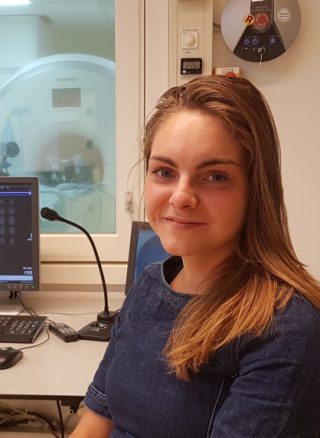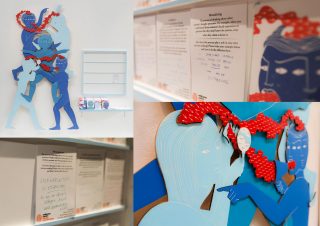The value of advice from the perspective of a decision neuroscientist
Elisa van der Plas is a PhD student in the Metacognition Team at the Wellcome Centre for Human Neuroimaging and is part of the Mental Health and Justice Initiative, a multi-disciplinary research collaboration on the concept of support in decision making and the decision making ability. She investigates what roles metacognition (how our brain thinks about thinking), and social influence play in our capacity to make decisions. A person’s capacity to process advice is an important aspect of decision-making in the real world. For example, in decisions about treatment, the way that patients respond to the advice of family, friends and medical professionals about a treatment may be used as a different marker for their decision-making capacity depending on whether it was in a clinical or a legal context.
Elisa recently wrote a review in the International Journal of Law and Psychiatry discussing advice-taking as a bridge between decision neuroscience and mental capacity. Below she describes the paper, why she chose to write it, and the influence it has had on her research.

Our lab investigates metacognition or ‘thinking about thinking’. This thinking can be about our one’s own thoughts, such as understanding that we perceive reality differently from how it objectively is; or thinking about other people’s thoughts, such as understanding that someone else perceives reality differently from us. This thinking, albeit being hidden somewhere deep in our cognition, can have very real consequences to everyday decisions. For example, a patient that does not acknowledge their illness may see little reason to comply to their medication or seek medical help.
When these occurrences of ‘incompliance’ are disputed in court the law needs to distinguish markers of decision-making capacity from an individual’s preferences. In other words, just because you chose not to follow your doctor’s advice and did not take your medication, this does not directly mean that you are unable to decide. Instead of focusing on the outcome of the decision (e.g. to take medication or not), the court requires a capacity assessment to be informed by the decision-making process (e.g. whether the advice was considered in the first place), which is much more difficult to measure.
When I learned this at the start of my PhD I started to see where and how decision neuroscience may contribute to law in the context of decision-making capacity. Decision neuroscience may contribute to a better understanding of decision-making processes, i.e. What is going on in someone’s mind when they are faced with different choice options?
Intrigued by this question I decided to focus my PhD on the process of advice-taking. This is an interesting concept from many angles. We often consider people that are too malleable to advice ‘soft’ and ‘easily manipulated’; while at the same time, often consider people that never change their minds to be considered ‘stubborn’ or ‘conservative’. This tension is also reflected in capacity assessments, which require people to be open to new viewpoints or the clinician’s advice when it is helpful; but not so much that they change their opinions with every changing situation.
Breaking down the advice-taking process into separate decision-making components may help to provide more targeted support. There may be individual and cultural differences in how we mentally figure out who is right: some people may be more inclined to overly doubt themselves even when they know that not all advice is accurate; others may systematically overestimate the accuracy of advisers at the cost of their own opinion.
A combination of neuroscience and computational modelling can help us reveal that, while different decision processes can have similar decision outcomes, they may still have completely different cognitive bases. For example, someone can take advice, not because they have ‘seen’ and adopted the adviser’s perspective’ (private compliance), but just because social compliance is a socially accepted thing to do (public compliance).
I was recently involved in the Dear World Project, a public engagement project where neuroscientists and artists were paired to explore each other’s research methods to collaborate on a piece of art reflecting the neuroscientists work. I was paired with artist Tom Berry and this paper was very useful to kickstart the collaboration between Tom and me. I tend to use a lot of technical language when talking about my work (sorry!), and it already became clear quite early on in the collaboration that it was important for Tom and me to ‘speak the same language’. At one of our first meetings, we met at a cafe and went through the main definitions that my research focuses on. A few weeks later, he sent me a quiz: he had visualised four core definitions of my research: metacognition, mentalising (metacognition about other people’s thoughts), private and public compliance, and I had to guess which definition corresponded to which drawing. These initial drawings were the start of what was later to become our artwork (A Sense of Direction): a beautiful visualisation of five different people who interact with one another around a simple choice: whether to go left or right. This time it was the audience’s turn to guess which process corresponds to what concept and write down how this process played a role in their everyday lives.

There may be a lot to gain if scientists and policymakers would reach out to one another more often, so as to profit from each other’s knowledge. With an evidence-based government and one of the most leading neuroscience laboratories right around the corner, I found London a very encouraging place to work on such a translational turn.
The full open access paper can be accessed here.
You can read more about Elisa’s contribution to the Dear World Project here.
Elisa also told us more about her path into neuroscience in our #WhoIsWCHN series, which you can view here.